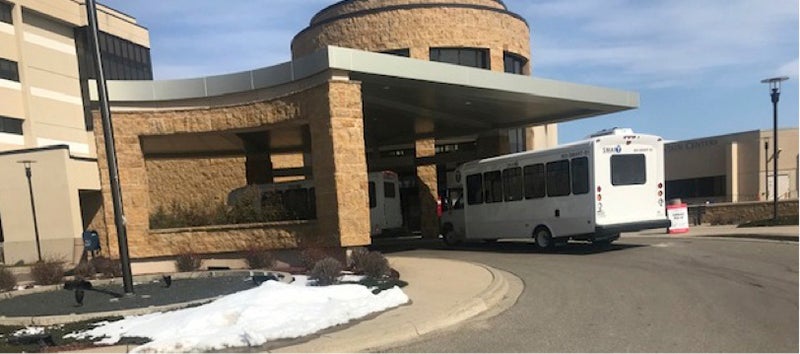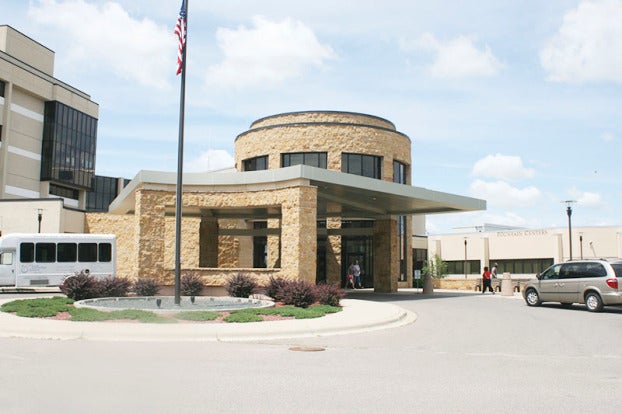Daily COVID-19 update: 48 more deaths, 2,387 new cases
Published 12:04 pm Friday, January 8, 2021
|
Getting your Trinity Audio player ready...
|
New data from the Minnesota Department of Health shows 48 more deaths and 2,387 new cases Friday as state Health Commissioner Jan Malcolm said earlier that health officials are watching for any “bump” in COVID-19 cases due to holiday gatherings.
After a few days of increasing test positivity numbers, the seven-day average ticked down from 6.3 percent to 6 percent.
Malcolm told reporters Thursday that the case counts are something officials are keeping a close eye on.
“We do continue to watch for any bump in cases associated with holiday gatherings. We think we might be seeing a little bit of that. So far we’ve averaged 2,300 new cases each day over the past seven days,” Malcolm said. “And that’s up from about 1,800 a day during the week between Christmas and New Year’s.”
Minnesota is still seeing some encouraging trends in the pandemic with fewer hospital beds occupied by COVID-19 patients, Malcolm added. Prior to the holidays, more than 1,000 patients being treated in hospital beds for COVID-19 treatment. On Thursday, Malcolm reported that 787 patients in Minnesota hospitals are being treated for COVID-19 with 135 treated in intensive care.
But she warns that the next weeks will be critical to see if relaxing restrictions will have an impact on the virus spread.
“We must continue to take precautions to combat the spread of virus around our state,” Malcolm reiterated. “We know that masking, social distancing, staying outside while gathering are just critical, as well as getting tested if you feel ill.”
The new cases are on top of more than 49,001 COVID-19 tests. That’s a high watermark for testing in the last week, as testing volume slowed over the holidays.
Meanwhile, 104,226 people have been vaccinated against COVID-19. Nearly 400,000 doses of the vaccine have been delivered to Minnesota since mid-December, but health officials warn it will take through the end of January to vaccinate those designated in phase 1A of the vaccine rollout.
More than half of Minnesota nursing homes are receiving vaccines from drug store chains that have contracted with the federal government, but a lack of staff has led to bottlenecks in getting the shots to this high priority group.
State infectious disease director Kris Ehresmann said Thursday that around 9,000 nursing home workers and residents have been vaccinated — that’s just a fraction of the total.
“We’re definitely watching to see how well and how efficiently the program is going,” Ehresmann said. “And if there are problems, just like other times when there’ve been hiccups, we will look to see what we can do to assist.”
Officials say CVS and Walgreens have told the Health Department it will take three to four weeks to get through all the nursing homes. Smaller pharmacies say they’re able to move more quickly.
Malcolm added that Minnesota is screening for the U.K. variant of the coronavirus — which researchers say is a more transmissible form — but Malcolm said while the state health lab can screen for the variant, not all labs have the ability to do so.
Restrictions to ease next week
The new numbers came two days after Walz announced he will allow bars and restaurants to offer indoor dining again next week with limits, and movie theaters, museums and other entertainment venues can reopen after being closed since mid-November. The new restrictions will begin starting Monday.
Walz framed the moves as cautious adjustments but made clear he won’t allow new virus spread to snowball. He also urged Minnesotans to continue social distancing and wearing masks to slow the spread of the virus.
Caseloads spread across age groups
People in their 20s still make up the age bracket with the state’s largest number of confirmed cases — more than 80,000 since the pandemic began, including more than 42,000 among people ages 20 to 24.
The number of high school-age youth confirmed with the disease has also grown, with more than 32,000 total cases among those ages 15 to 19 since the pandemic began.
Although less likely to feel the worst effects of the disease and end up hospitalized, experts worry youth and young adults will spread it to older relatives and members of other vulnerable populations.
It’s of particular concern because people can have the coronavirus and spread COVID-19 when they don’t have symptoms.
New cases spread across Minnesota, not just one region
The minor bump in new cases is happening all around the state, not just in one particular region.
Central and western Minnesota drove much of the increase in new cases over the past two months, while Hennepin and Ramsey counties showed some of the slowest case growth in the state.
Hot spots continue to pop up in rural counties relative to their population.
Caseloads still heaviest among people of color
In Minnesota and across the country, COVID-19 has hit communities of color disproportionately hard in both cases and deaths. That’s been especially true for Minnesotans of Hispanic descent for much of the pandemic.
Even as new case counts ease from their peak a few weeks ago, the data shows people of color continue to be hit hardest.
Distrust of the government, together with deeply rooted health and economic disparities, have hampered efforts to boost testing among communities of color, officials say, especially among unauthorized immigrants who fear their personal information may be used to deport them.
Similar trends have been seen among Minnesota’s Indigenous residents. Counts among Indigenous people jumped in October relative to population.
South-central case updates
Freeborn County reported 21 new lab-confirmed COVID-19 cases on Friday, increasing its cumulative case count to 2,173 cases.
Of those cases, 182 are considered active cases, according to the Freeborn County Public Health Department.
The new cases included five people between 15 and 19; two people in their 20s; one person in their 30s; one person in their 40s; five people in their 50s; six people in their 60s and one person in their 70s.
One new person has been hospitalized, and 108 have been hospitalized at some point for COVID-19 since the start of the pandemic.
The following is an update on other area counties:
• Faribault County: 14 new lab-confirmed cases; 996 total cases
• Mower County: 26 new lab-confirmed cases and one probable case; 3,444 total cases
• Steele County: 19 new lab-confirmed cases; 2,583 total cases
• Waseca County: 10 new lab-confirmed cases and one new probable case; 1,836 total cases.






